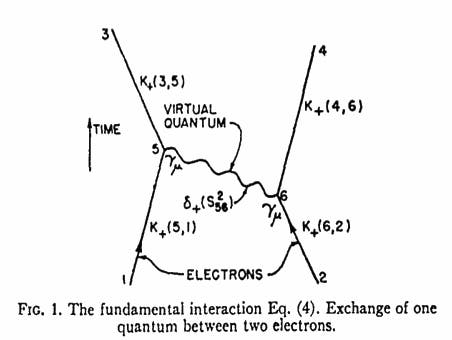Learn Twice In Half The Time. ⏩
Fall in love with learning & sharing.
“The beautiful thing about learning is that nobody can take it away from you.” ― B.B. King
Learning, just like any other activity, is quite a long process. The hardest part of any process is to get started. But, the more interest, consistency & diligence involved in the process, the easier it becomes. And, remember, it always seems hard, before it becomes easy.
Throughout this article, a point to note would be: learning and memorizing is not the same . When you understand what you are dealing with, the things you deal with and the process becomes relatively smoother.
Learning is not equivalent to mastering. But to master, you need to start with learning and then gradually move your way forward. This article is designed to help you out with your journey of learning(anything). 📚
I have always been trying out various methods, which I thought would help me learn faster. In due time, I settled with some of the techniques, that really helped me understand better and learn faster.
A few months back, I was reading a blog that listed the Feynmann's Techniques - Learning techniques to help learn better.
It was a pretty interesting read, although I do not recall the blog site exactly. (Please comment down, if you know, it had a pretty yellow color symmetry all across the blog site.) I was surprised to see, I was already using some of the techniques listed there, which definitely helped me learn & understand better.
This blog will be more focused on discussing & sharing Feynman's Learning Techniques. Which will definitely help in learning new subjects(anything), learning for exams, and even pursuit for higher educations.
Why is it 'Feynman's Techniques'?
Richard Feynman was a genius in short. He was an author, intellectual, philosopher, and one of the most outstanding physicists. In the world of science, he stands at a different place, to be able to break down and explain complex scientific concepts. His lectures were extolled by the kinds of Albert Einstein, Bill Gates.
Bill Gates was so impressed by Feynman's way of communicating and breaking down complex things into simpler ones, he called Feynman 'The greatest teacher I never had'. Gates also posted a video tribute to Feynman, on his own blog space - GatesNotes. Read That Article Here
Feynman was a great explainer. His ability to communicate complex knowledge in the simplest terms to make everyone understand, and adding humor, clearly made him stand miles apart from his counterparts.
The highest forms of understanding we can achieve are laughter and human compassion. ― Richard P. Feynman
What are Feynman's Techniques?
Now that we know who Feynman is(he is a legend, and legends do not die. They stay in the hearts of people they have inspired) & why is it Feynman's Techniques, let us quickly go through 'What are the Feynman's Techniques?'.
Feynman's technique of learning & teaching is a mental model, a breakdown of his own thought processes, to convey information using short & to the point thoughts and in simple language. This model is derived from Feynman's own studying methods when he was a student at Princeton.
1. Recognize the subject - Write it down
Take out a paper, and write down everything you know about the topic. Every time you gain new information, add them to the notes.
No one can retain every information all the time. Sometimes, when you miss out on detail, you can always go back to your notes. A note comes in handy during this.
Writing down everything on a piece of paper provides clarity - how much is known and how much is yet to be.
Feynman, however, had an interesting relationship with writing. He preferred verbal communication more than committing to a piece of paper. Most of his works are transcribed from his speech and dictations.
This brings us to the next point.
2. Teach it to a child
When one teaches, two learn. - Robert Heinlein.
If you can teach something to a child. You are already leading the game. Teaching something to a child leads to considering a few things :
Simplicity - Whenever you are teaching a child, you need to be very careful not to use unnecessarily complicated terms. You have to use words that the child understands.
Keeping it brief - Children usually have a very short attention span. So there are high chances they will get bored of too much information. One way to be able to grab their attention is by keeping the topic concise.
My add-on to this topic point would be: In order for you to assess your understanding and making it better, you can even teach the topic to anything(even an inanimate object) considering it as a child or a newcomer to the field.
Using too many complicated words? Be careful!
3. Identify knowledge gaps
The pursuit of learning is a lifelong process. the more you dig deeper, the more you find you have missed out on a detail. That is when you identify the gaps in your knowledge. The missing pieces of the puzzle. This is the point where actual learning happens. This helps in structuring your learning curve by identifying - what next?
I learned very early the difference between knowing the name of something and knowing something. ― Richard P. Feynman
4. Tell a story
The most important aspect of a story is its structure. When you are teaching something. Start with sharing a story, as it will give a proper direction, a structure to organize and simplify the thoughts.
Use analogies, wherever possible to further simplify concepts. Moreover, practice reading your own story. This will help in identifying incomplete thoughts.
Communication is the best when it's relatable and easily comprehensible. Teaching is essentially communication.
5. Use visuals
Visuals can be anything - a flow chart, HLD, or even an illustration. Visuals enhance the comprehension ability.
My add-on would be: use your own Mental Models whenever you can.
The whole purpose of mental models is to simplify complex processes that are easy to read and comprehend.
Whenever you are dealing with some complex topic, breaking it down in your mental model or by using drawings, enables better understanding & easier impart of information.
Below is a picture drawn by Feynman, that won him a Noble Prize. Why is it so special? The topic he simplified through his drawing is one of the most difficult topics. Before Feynman's diagram, there was not a clear way to explain this.

Image Attribute : By JabberWok at the English language Wikipedia, CC BY-SA 3.0
Conclusions
Following some of these will enhance your learning, sharing experience by multi-folds. This is coming from a very personal experience. I have also added my tiny bit of share in explaining or adding on to the model. All of these will definitely help you learn better - be it for exams, new topics or further studies.
With all these at your corner, how do you plan to use them? Which are the ones you already follow? Which are the ones you will start to henceforth? Let me know in the comments.
Have a wonderful weekend. 🎉
